new posts in all blogs
Viewing: Blog Posts Tagged with: for childrens writers, Most Recent at Top [Help]
Results 1 - 25 of 30
How to use this Page
You are viewing the most recent posts tagged with the words: for childrens writers in the JacketFlap blog reader. What is a tag? Think of a tag as a keyword or category label. Tags can both help you find posts on JacketFlap.com as well as provide an easy way for you to "remember" and classify posts for later recall. Try adding a tag yourself by clicking "Add a tag" below a post's header. Scroll down through the list of Recent Posts in the left column and click on a post title that sounds interesting. You can view all posts from a specific blog by clicking the Blog name in the right column, or you can click a 'More Posts from this Blog' link in any individual post.
This week’s guest on Book Bites for Kids, LIVE on blogtalkradio at 2:00 CDT on Wednesday, August 25, 2010, will be children’s author Jennifer Swanson. Swanson will talk to host Suzanne Lieurance about her new book in the Penny & Rio Series, The Diamond Collar Adventure.
Call in during the LIVE show at 1-646-716-9239 to ask a question or make a comment.
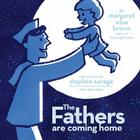
About the Book:
A new adventure! The dynamic canine detectives, Penny and Rio, escape from the backyard for the first time in search of a valuable diamond collar lost by Hannah, the beautiful show dog. During their search for the misplaced treasure, they encounter Ted, the loveable but somewhat clumsy collie, Sarge, the belligerent and forceful German shepherd, and an obstacle of epic proportions. But just when it feels like Penny has reached the end of the adventure, the prize is ripped from her grasp. Solving this new problem will take all the ingenuity and determination these dog detectives can muster.
This week’s guest on Book Bites for Kids, LIVE on blogtalkradio at 2:00 CDT on Wednesday, August 18, 2010, will be “New York Times” bestselling artist Stephen Savage. Savage will talk to host Suzanne Lieurance about The Fathers are Coming Home, a new picture book he illustrated for never-before-published work from one of children’s literature’s greatest writers Margaret Wise Brown.
Call in during the LIVE show at 1-646-716-9239 to ask a question or make a comment.

About the Book:
As night falls, the fathers come home. The rabbit hops home to his bunnies; the dog returns to his puppies; the bird brings home a worm and sings a song. And the boy’s father, who is a sailor, comes home from the sea. Simple, lyrical words and pictures tell this timeless story, a heartfelt tribute to the love between fathers and their children.
SIMON SAYS
A weekly column from children’s author Simon Rose
Last week, we talked about determining what type of presentation you might be looking for during an author visit to your school. These mostly related to one day visits, but for an here on my website. However, this is just an example, and I am always happy to discuss a residency with the school to determine how the time there will work best. I offer a variety of presentations and you can see these on my website here. However, certain sessions remain popular, such as those relating to the superhero genre, the subject matter of The Emerald Curse, or the ones about time travel, since three books feature this theme. You can learn about the subject matter of my books here.
I also offer a variety of workshops on writing topics such as character development and dialogue, creating stories for younger students in K to 2, and on popular subjects such as the fantasy realm and science fiction, but I am very flexible and always happy to discuss matters with the teachers to ensure a good fit with the students.
I have also worked on dramatic productions with children, both in schools and at summer camps, plus I conduct programs very similar to a residency in my work with homeschooled students. Any author who is advertising his services as an author in residence will similarly have a wealth of material to draw on for workshops designed to take place over the course of a week or longer at your school.
This week’s guest on Book Bites for Kids, LIVE on blogtalkradio at 2:00 CDT on Thursday, August 5, 2010, will be author Louise A. Jackson.
Jackson will talk to host Suzanne Lieurance about her middle grade novel Exiled! From Tragedy to Triumph on the Missouri Frontier.

About the Book:
Learning about screenwriting, and the business of being a screenwriter, can be a big help to children’s authors. Esther Luttrell is starting a new 6-weeks series of teleclasses next week. Listen to this two part interview with Esther, where she explains the benefits of learning about screenwriting–no matter what kind of writing you do!
Tools of the ScreenWriting Trade:
The Business of Being a Screenwriter

Listen to this Part 1 of an interview with Esther Lutrell to find out more about this series:
Listen to Part 2 of the Interview with Esther Luttrell here:
To learn more about this series and to register for it NOW, click here!
SIMON SAYS
A weekly column from children’s author Simon Rose
Many authors who conduct school visits on a long-term basis have a well thought out set of presentations, workshops and other material. These might be related to their own books, but also to topics such as editing and revision, for example. Authors might talk about where they get their inspiration, character development or just how a book comes together, and whenever possible they leave time for questions from the children.
In addition to the subject matter of my own books, I cover such topics as where ideas come from, story structure, editing and revision, character development, time travel stories, the superhero genre, history and research and more. I will present to up to a hundred students at a time, although the smaller the audience the more participation from children, as a rule. I also consider workshops with smaller groups or individual classes. A list of some of the presentations I offer can be found here, but I am always happy to discuss matters with teachers to design sessions to best serve the needs of their students.
An important thing to consider when deciding to host an author visit is what type of presentation you’re looking for. There are usually numerous types to choose from and all authors are different in this regard. Are you looking for an author who will just read to the children or only be there to answer questions from the students, either about their book or about writing in general? Perhaps there’s part of the school curriculum that you would like to emphasize and the author’s books are related to it in some way? Is there a project the students have been involved in to which the author can contribute, either by assisting them in getting started or in bringing it to a satisfactory conclusion? Are you looking for workshops, in which you want the children to actually do some writing or would you like them just to listen to a presentation? Are there particular general topics on writing, rather than those related to the subject matter of the books, that you want the author to focus on? Do you want small groups in classrooms or the library or a hundred or more children in the school gym? How long do you want the sessions to be, to fit in with the normal schedule of the school day? Do you want the author to actually teach the children something or simple appear almost as a celebrity guest to inspire them? These are all important things to consider when planning an author visit and ensuring that it all goes smoothly.
Learning about screenwriting, and the business of being a screenwriter, can be a big help to children’s authors. Esther Luttrell is starting a new 6-weeks series of teleclasses next week. Listen to this two part interview with Esther, where she explains the benefits of learning about screenwriting–no matter what kind of writing you do!
Tools of the ScreenWriting Trade:
The Business of Being a Screenwriter

Listen to this Part 1 of an interview with Esther Lutrell to find out more about this series:
Listen to Part 2 of the Interview with Esther Luttrell here:
To learn more about this series and to register for it NOW, click here!
by Jim Salicrup
The newest, most vibrant category to emerge in the volatile world of book publishing is the Children’s Graphic Novel. That’s a distinction that may be lost on some folks who may still believe that graphic novels, which are essentially comics printed in book form, are all for children. Fortunately most people are more enlightened these days and realize that graphic novels are, in fact, written for just as many audiences and types of readers as traditional books.
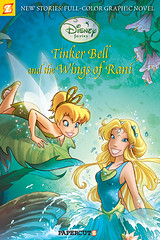
The confusion arises because “graphic novel” has been used to describe just about every type of book featuring comics, other than manga (Japanes comics). Unlike other sections of the bookstore, such as “Mystery,” “Science Fiction,” or “Romance,” “Graphic Novels” is not the name of a genre, but a category. Like “Audio Books,” which can also encompass a multitude of genres, “Graphic Novels” are not just one type of book. In other words, until recently every type of graphic novel has simply been stacked together in one section regardless of content.
The good news is that the Children’s Graphic Novel is the first genre to break free from the generic Graphic Novel section. A wise move on many levels, especially because bookstores need to be sensitive to customers needs-particularly parents who don’t wish to inadvertently purchase inappropriate material for their kids.
So as a new section is carved out of the always-crowded bookstore shelves, astute publishers recognize the need for material to fill this new demand. And that’s when ambitious writers start sniffing around to see if they can get in on this new craze. But what do they really need to know if they hope to actually sell a Children’s Graphic Novel to a publisher? Let’s take a look at, and answer, some of the most commonly asked questions.
1) Do I need to be an artist?
No, but it doesn’t hurt if you are, and your proposal should include either the entire finished Children’s Graphic Novel or a sizeable sample. If you’re not an artist, then you will need to find one. Comics are obviously a visual medium, so even if you’re not an artist, it’s important to think visually. If you want to keep a kid’s attention throughout your Children’s Graphic Novel, it’s important to keep the graphics as compelling and as exciting as your script. If either the story or the artwork appears boring, why would any kid want to read your graphic novel? For the best guidance check out Will Eisner’s Comics and Sequential Art, Will Eisner’s Graphic Storytelling and Visual Narrative, and ScottMcCloud’s Understanding Comics: The Invisible Art.
2) How do I find a Children’s Graphic Novel artist?
There are many ways. One is by attending comicbook conventions, especially those in large cities that feature portfolio reviews. Many professional or would-be comicbook artists attend these conventions hoping to find work from attending comicbook editors. Simply introduce yourself to these artists, explain that you’re hoping to find an artist to work with to propose a Children’s Graphic Novel. Don’t feel obligated to work with the first artist who is willing to work with you. It may be best to suggest that you’re looking for the right artist for your project, and that you’ll need to review the work of several artists to find the one that’s right. Another way to find an artist is by reviewing the samples posted on deviantart.com
3) Do I need a contract with the artist?
To be safe, it’s probably best to have a written agreement between yourself and your artist before you actually start wor
This week’s guest on Book Bites for Kids, LIVE on blogtalkradio at 2:00 CDT on Wednesday, July 28, 2010, will be author Duane Porter.
Porter will talk to host Suzanne Lieurance about his new book Molly O’Malley and the Pirate Queen – Book 3 of the Molly O’Malley Trilogy.
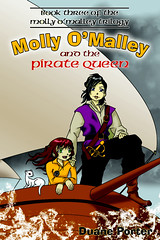
About the Book: Ireland’s famous pirate queen has been dead for over four hundred years. But a secret still slumbers within Rockfleet castle’s grey walls, waiting for Molly O’Malley to awaken it.
Molly finds herself in the year 1579 where the legendary pirate Grace O’Malley still fights for survival against invading English and rival Irish clans. Molly desperately needs the help of her friends from the Fairy Kingdom to get back home to Chicago and her own time.
The problem? In order to save herself, she must first save the pirate.
While most classroom teachers enjoy the summer break from work that a teaching position gives them, other teachers struggle to find part-time work during that time to earn a little extra income.
If you’re one of those classroom teachers who searches for part time work during the summer, writing for children just might be the job you’re looking for. Here’s why:
1. During the school year you’re in close contact with children and/or teens in your classroom. That means you know first hand what kids or teens think about, how they talk, and how they act. You can use this information to create believable child or teen characters and dialogue for these characters that rings true. If you read stories and books for children with your students during the school year, you also know the kinds of story lines that appeal to children and teens.
2. As a teacher, you have access to your school’s library. Talk to the librarian to find out what kinds of books students find most interesting. Also, what kinds of books seem to be in short supply? Does your school librarian think there needs to be more middle grade novels available for girls, for example? Or, is there almost nothing available on certain topics of interest to children? Use this information to create stories, novels, and nonfiction articles and books that will help fill these voids or shortages.
3. You know what kinds of materials you like to use in your classroom with your students. Why not try your hand at creating some of these materials for children’s educational publishers? Most of the best teaching materials are created by teachers themselves. Why not make some money from the types of materials you are probably already creating and using yourself in your own classroom?
4. Once you gain a few publication credits, you can continue writing for children or teens during the school year. You won’t have time for as much writing while you’re teaching, of course. Still, you can probably manage to work on at least one nonfiction article or short story for children or teens each month. Even if you don’t finish these pieces and submit them for publication during the school year, when school ends for the summer you will have plenty of writing projects to finish up and submit to editors.
5. Once your part-time children’s writing career is established, you won’t need to search for a part-time job every summer. You can immediately get to work once summer break begins. You might even manage to line up some regular summer writing assignments with one or two children’s educational publishers. Many full-time teachers manage to write a short nonfiction book for children or teens every summer and substantially increase their yearly income.
6. Should you ever decide to stop teaching, or when you retire from teaching, you will already have an enjoyable second career to fall back on. And this time, you can work from home in the comfort of your pajamas if you like!
These are just a few of the reasons that so many classroom teachers turn to writing for children as a part-time job or second career. If you enjoy writing as much as you enjoy teaching, then writing for children just might be the perfect summer job or second career for you, too.
Become a member of the Children’s Writers’ Coaching Club and learn all you need to know to become a published children’s writer!
SIMON SAYS
A weekly column from children’s author Simon Rose
Once your site is established and hopefully attracting visitors, it’s good to know just how effective your presence on the World Wide Web actually is. You’ll know which specific areas of your site are getting the most visitors if you have access to good statistics, which are usually provided as part of your web hosting package. These are much more useful than the traditional visitor counter, which indicates how many people have been to your site since a particular date. This can sometimes be detrimental, especially if you are declaring to the person that they are only the forty seventh visitor since January 2005.
Good statistics are invaluable, because they tell you not only how much traffic your site is getting, but also precisely where the visitors are coming from. This can help you to target your marketing to specific areas of the country or around the world. It can also help you determine which of your professional memberships are the most worthwhile when it comes time to renew them. If a particular group is the source of a fair amount of traffic, it’s a good one in which to retain your membership. If another organization has very few referrals to your website, it may be advisable to spend your money elsewhere.
Your home on the Internet can be as simple or as complicated as you desire. Websites aren’t for everyone, but today if you want to get noticed, it’s highly advisable to have one.
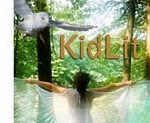
KidLit has launched Adventures in Children’s Publishing, a frequently updated blog that consolidates important publishing tips from Publisher’s Weekly, Publisher’s Marketplace, various book review sites, author sites, and a large number of agent’s and publisher’s blogs.
It also provides a occasional posts on the craft of writing for kids, like the recently posted Pre-Submission Checklist to help writers give a final go over before sending out their manuscripts.
The blog also includes pages with quotations by writers, gorgeous passages from children’s literature, and daily writing assignments to help jump start the writer’s imagination.
Click here to visit the new site!
 Nancy I. Sanders
Nancy I. Sanders Answers The Question
A publisher does not expect you to submit the illustrations for your picture book manuscript. Most publishers maintain files on hand of art samples and portfolios from professional illustrators. When they acquire a picture book manuscript, they go through their files and carefully match the text with a certain illustrator’s style. Then they sign the illustrator to join the project.
If you want to illustrate your own picture book, however, it’s important to understand that there are countless lessons to learn about writing a picture book. For a picture book illustrator, there are innumerable “do’s” and “don’ts” to follow. Both sets of rules are completely different and very complex. If you are interested in both writing and illustrating, make the decision and choose which one you want to be first, a writer or an illustrator. Develop your skills in one area. Focus on learning all the skills you can in one arena until you start landing contracts and have several published picture books under your belt.
If you wrote a picture book, but want a friend or family member to illustrate it, don’t submit your manuscript to a standard publisher and ask them to use the person you know as the illustrator. It’s simply not how the industry works. Consider self-publishing with a print-on-demand publisher, instead.
If you are open to having the publisher choose the illustrator for your picture book, submit your manuscript following the publisher’s writers’ guidelines. Publishing houses have different sets of rules and submission policies for writers and manuscripts than they have for illustrators and artwork. The majority simply won’t want to work with a new, unpublished writer who wants to bring his own illustrator on board as well.
Publishers know how tough the picture book market is. Picture books are the most expensive books to print because of the full-color pages and cost of ink. They are therefore the most expensive books in the bookstore for a consumer to purchase. Often, sales lag.
One common method publishers use to boost sales of a picture book by a brand new author is to team it up with a well-known and popular illustrator. With this in mind, you don’t want to hurt potential sales of your picture book by having both an unknown author and unknown illustrator on the project.
If you’re still itching to illustrate your own picture book, wait until you acquire a following of readers who will guarantee sales of a future book. For now, let the publisher match your manuscript with just the right talent to boost your sales and your popularity. After you have established a steady writing career with solid published credits, take time to join an illustrator’s group if you’ve got an artist’s heart. Learn what it takes to develop your portfolio and become a successful picture book illustrator. Once your art portfolio is prepared professionally and circulating among various publishing houses, go ahead and let your editor know that you are interested in illustrating your own picture book. There are many beautiful and successful picture books on the market that are both illustrated and written by the same professional and talented person. Be brave and take that step! Who knows? At this stage in your career, you just might be the perfect illustrator for your very own book.
Bio: Nancy I. Sanders is the author of over 80 published books including board books, novelty books, craft books, nonfiction books, picture books, and middle-grade novels. Visit her website at www.nancyisanders.com to find out more.
by Nancy I. Sanders
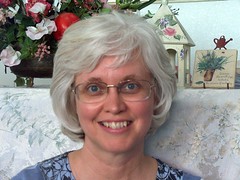 Children’s Author Nancy I. Sanders
Children’s Author Nancy I. Sanders
Question:
Do I really need an agent?
Answer:
Everyone complains that it’s impossible to get a children’s book published these days because every publisher requires agented submissions. This simply is not true. Even the big houses send acquisitions editors to conferences where they will pick up your manuscript if they find merit in it. There are also numerous smaller houses who take unagented submissions. In fact, some publishers prefer not to work with an agent. These publishers are usually known as “smaller” publishers because they produce fewer titles each year, have a smaller editorial staff, and publish a lower print run. They may not be able to pay fees that cover an agent’s expense.
It’s actually good experience to go through the process of landing a contract at least once by yourself to know what an agent is supposed to do. It also puts you one step ahead of the rest. At one point, agent Rachelle Gardner posted on her blog at cba-ramblings.blogspot.com that she had over 200 submissions she was considering, most of which were by unpublished authors. It’s to your advantage to earn publishing credits before you contact an agent. How? Search your market guide. Look for publishers who say 50% or more of their product list is with first time authors. These publishers probably won’t be the huge megacorporations every writer dreams of signing a contract with. Many publishers who work with a high percentage of first-time authors are smaller or focus to fill a specific niche in the publishing world. None-the-less, these publishers usually offer standard contracts. And the nice surprise is that they’re often eager to hear from you.
Once you experience some publishing success and know how signing a contract works, you can certainly try to acquire an agent. There are numerous benefits to having one such as representation, constructive feedback, and legal advice. Meet with various agents—look for conferences that offer private appointments—or get to know them better by reading their blogs. As you’re sending out simultaneous submissions to publishers for your manuscript, include several agents in your mailing list as well. An agent won’t just want someone who can write, however. Agents are on the lookout for writers who also have a platform. They know that it’s one thing to get a book published. It’s another thing to get it to sell. While you’re looking for an agent, also start building up your platform. Teach writer’s workshops, build a blog, and schedule book signings for the books you’ve already had published. Make an agent want you as much as you want an agent.
As you’re searching for an agent, what exactly do you want from your writing at this point in your life? Do you want representation at the top houses but want to manage your own career? Look for an agent who will represent your book, not your career. If you want someone who will give advice on how to shape a more successful career, look for an agent who offers to spend time helping you develop long-term goals. Also take an honest look at your strengths and weaknesses. Are you interested in writing for the educational market and have numerous ideas for titles in this genre? You probably don’t need an agent to follow your dreams. Have you experienced solid success in the work-for-hire nonfiction market and love the fast, frenzied pace and tight structure of nonstop assignments? An agent in the loop might slow down your pace—and your income. However, if you feel you have the skills to write picture books with pizzazz or sweep-‘em-off-their-feet YA novels, then acquiring an agent will probably be to your advantage to la
Overwhelmed with all the information out there for writing for children?
Not sure how to weed out the essentials?
Look no further!
Visit the Children’s Writers’ Coaching Club (CWCC) today and learn how to set your weekly marketing plan in place (you may refer to this as your “To Do List”). Coupled with weekly tele-classes and monthly assignments you will soon see your writing career moving in a positive direction.
The guidance and support at the CWCC has been instrumental in the success of my writing career. My first story book, due to be released Spring/Summer 2010 by Guardian Angel Publishing, is a direct result of an assignment through the CWCC. And my most recent news, by attending one of the tele-classes I received direct information about a work-for-hire opportunity, I took the plunge, submitted my information, and was hired within 14-days!
Writing can be a lonely business, but with the expert coaching from Suzanne Lieurance and camaraderie of the CWCC members you will no longer feel adrift in a sea of jumbled words.”
 Donna M. McDine
Donna M. McDine
Member, Children’s Writers’ Coaching Club
Children’s Author
Read Why Terri Forehand Enjoys Membership in the Children’s Writers’ Coaching Club!
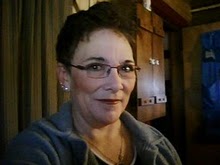
from Terri Forehand
I can’t really say enough about The Children’s Writers’ Coaching Club and Suzanne Lieurance’s mentoring. I gained so much knowledge from her bootcamp and then I have continued to stay in the club for the constant support and encouragement it offers. I have obtained paid writing assignments from publishers like Mometrix Media and Kaplan as a direct result of the information and skills that I have learned from being a club member. I continue to get repeat assignments from these publishers on an ongoing basis including writing health exam questions for National Certifications in Nursing. It is so rewarding to get paid for what I love to do, write.
The Children’s Writers’ Coaching Club also teaches the skills needed for creating a blog, writing a marketing plan on a weekly basis, and learning critique and editing skills. Sharing my marketing plan with the club members makes me accountable for my writing career and encourages me to work harder and write more. I can’t thank Suzanne enough and the others for the positive feedback I get and for being honest when I need to seriously revise some of my work. The weekly critiques help get my writing focused and makes the material more polished for submission to appropriate publishers.
Because of being a club member, I now have two manuscripts for children ready for submission. I am working on a third story for children and have started to introduce my main character on my blogs. These blogs would not be possible if I had not gained this information from bootcamp and being a club member. I have a blog for new writers at http://terri-forehand.blogspot.com and a blog for parents and children who are dealing with serious health issues including terminal illness at http://heartfeltwords4kids.blogspot.com. I even have two websites I am working on and a mailing list of followers, all a result of what I have learned at The Children’s Writers’ Coaching Club.
Anyone who wants to write for children would benefit from becoming a club member. We learn, we write, we support each other, and most of all we have fun doing what we love thanks to being an active club member. I encourage all of your readers to join us as soon as possible to gain everything the club has to offer. It has been a huge impact on my writing career and has opened so many exciting doors to publishing.

Pat McCarthy is the author of over a dozen books for children. Over the years, she’s also created puzzles, quizzes, and short fillers for a variety of newsletter and magazines for children.
Download the audio of this 55-minute recorded teleclass where Pat covers:
# Types of Puzzles and How to Create Them
# Other Short Items and Tips for Creating Them
# Finding Markets for Your Short Items
# What to Include in Your Cover Letters with Your Short Items
To get the audio for just $5.97, click here now!

by Karen Cioffi
I write for young children and I also write marketing and health articles. Writing in multiple genres, I can tell you that writing for children can be much more challenging. When writing for children, there are guidelines to keep in mind to help your story avoid the editor’s trash pile.
Writing for children involves specific rules and appropriate story lines geared to each specific age group. Each age group even has its own vocabulary: Is the word “smuggle” appropriate for a 2nd grader? There is just so much that goes into writing for children and the question becomes how do you learn all the rules, tricks and answers. Well, there are a number of ways to learn and hone your children’s writing skills, but the most efficient and expedient is to find an experienced coach.
I’ve only been writing seriously for publication for about two years. And, I admit I had it all wrong at the beginning. While I am still learning, I’ve come quite a ways. I’ve come so far that I recently got a contract for one of my children’s books with 4RV Publishing.
So, how did I learn the children’s writing ropes enough to land a contract?
The answer’s simple, through the Children’s Writers’ Coaching Club (CWCC). I joined Suzanne Lieurance’s club when I first became serious about writing for children. I can say without hesitation and with all honesty, Suzanne helped me get that contract. Her guidance, tips, knowledge, advice, lessons, teleclasses, and weekly critiques of my work all helped me to hone my craft.
What’s amazing about the Children’s Writers’ Coaching Club – CWCC – is that membership is only $27 per month. It is probably the best outright bargain online. That’s less than a dollar a day!
And, I praise the Children’s Writers’ Coaching Club (CWCC), only for what it’s helped me accomplish, but for what each and every member in the club has accomplished. I can’t be certain, but I think every club member has become published through either books or articles. That’s an amazing track record!
Suzanne Lieurance knows her business and has an innate ability to impart her knowledge to others. She’s a great coach, instructor, and motivator.
To add to this, along with Suzanne’s excellent coaching skills, the members of this group are all amazingly giving and helpful—this all makes for a dependable and proven path leading to publication.
But, if this isn’t enough, the CWCC also guides you through creating and maintaining visibility and marketing your work. We had one teleclass on creating a video so we could all learn to make book trailers for our published books!
So, if you’re serious about writing for children, don’t procrastinate, jump on board. It’s an investment in your future!
Join the Children’s Writers’ Coaching Club today.
Karen Cioffi, Author, Freelance Writer, Reviewer
by Amy M. O’Quinn

Like most other Americans, I did some major goal setting at the beginning of the year for the next twelve months. I have some good intentions, and perhaps this will be the year I have the satisfaction of completing them by December 31st.
I have often heard that writing down the things you want to accomplish is the first key to success. I recently read a book called Write It Down, Make It Happen by Henriette Anne Klauser, and while I don’t necessarily endorse or plan to do everything she recommends, I do think it’s a good resource for anyone who is interested in goal setting. It is a book that really helps the reader “focus” on what he/she wants to achieve, and how to take the necessary steps to move forward.
However, another important key is visualizing or having a clear picture in our minds of exactly what it is that we want to do or be. It is a driving factor to keep us motivated through the whole process. We can “see” the prize or outcome, and that picture keeps us going.
Is Visualization Effective?
I recently heard of two stories that illustrate how effective visualization can be. The first was about an experiment done where two groups of basketball players were shooting free throws. The first group of players actually practiced shooting free throws for at least an hour a day for several days that week. The other group of players was not allowed to actually shoot the ball at all. However, they were required to picture themselves shooting free throws for the same amount of time as the first group—but only in their minds. They had to ‘incorporate’ all five senses as they visualized themselves shooting the perfect free throw. At the end of the experiment, when both groups actually got on the court to shoot, the ‘visualizers’ outperformed the other group!
Another story involved a POW during the Vietnam War. Before capture, this young man had been an avid golfer, so to pass the time in his small cell, he ‘played’ the game of golf in his mind every day. He’d go through every course he ever played, and visualize each and every detail. After his release some ten years later, he played his best golf game ever! As one writer commented, his body carried out what his mind already knew how to do!
Visualization for Writers
So what does visualization have to do with writing success? It’s the same principle as if we wanted to lose weight, redecorate a room, or eliminate debt—we “see” the outcome in our mind’s eye. We are able to recognize the benefits, advantages, and rewards that will be ours if we reach the goal. In addition, that vision spurs us on to action to get the job done.
Do you picture yourself holding a book with your name on the cover, or perhaps simply reading a story to your children that you wrote with them in mind? Do you see yourself doing an author visit or presentation at a school or library, or maybe even passing out copies of the family history you compiled to your loved ones? What will it take to make those images into reality? One thing is for sure—you’ll already be motivated!
Story or Scene Visualization
There is also another type of visualization, called story or scene visualization. When I am writing a manuscript, I must first “see” the different segments of my story played out, much like a movie, in my mind. I need to picture the characters—what they look like, how they sound, how they move, etc. I also need to smell, touch, and perhaps even ‘taste’ these parts of my story as much as possible.
When we as writers immerse
.jpg?picon=694)
By: Adrian,
on 2/1/2010
Blog:
The National Writing for Children Center
(
Login to Add to MyJacketFlap)
JacketFlap tags:
Kathy Stemke,
Dorit Sasson,
for children's writers,
Irene Roth,
Nancy I. Sanders,
Grier Cooper,
Kristi Bernard,
Blog,
Mayra Calvani,
suzanne lieurance,
blog chain,
Terri Forehand,
Karen Cioffi,
Add a tag

This week we have something fun for everyone. It’s a blog chain, and you’re invited to visit all the links in this chain of fun and informative blogs from other children’s writers. Of course, you don’t HAVE to visit every link in the chain, but each link will have something special so you won’t want to miss a thing!
Here are the links in the chain, along with a short description of what you’ll find at each site:
Suzanne Lieurance
Children’s Author, Freelance Writer, the Working Writer’s Coach
http://www.suzannelieurance.com
Suzanne Lieurance is the author of over a dozen published books for children. Find out what she’s up to every day by visiting her author site. You’ll find information about all her books, upcoming writer’s conferences and other events where you’ll find Suzanne, as well as tips for both aspiring and established children’s book authors. Suzanne hosts Book Bites for Kids, a talk show about children’s books, every weekday afternoon on blogtalkradio. Find out who her guests will be each day by reading her blog. Sign up for her mailing list at the site and receive a FREE ebook.
Grier Cooper
Children’s writer, photographer, Dancer
www.griercooper.com
At griercooper.com, you’ll find reviews, tips, and articles about dance and movement for children.
Terri Forehand
Children’s Writer, Nurse, Freelance Writer
terri-forehand.blogspot.com
Terri is a freelance writer drawing on her experience as a pediatric critical care nurse and former elementary school nurse and high school teacher. She writes health and nursing educational material but her passion is in creating fiction and nonfiction for children. She is currently working on a series of easy readers focusing on teaching first aid to elementary students.
Nancy I. Sanders
Bestselling and Award-winning children’s author of over 80 books
www.nancyisanders.wordpress.com
Nancy I. Sanders loves to write for children, and she loves to help other children’s writers on their path to success. Much of the material she posts on her blog is based on her ground-breaking book, Yes! You Can Learn How to Write Children’s Books, Get Them Published, and Build a Successful Writing Career, Award-winning Finalist of the National Best Books 2009 Awards. Nancy writes a column for children’s writers for the Writer’s online magazine, the Institute of Children’s Literature e-News, and the Christian Communicator. She is on faculty at the National Writing for Children Center.
Mayra Calvani
Children’s Author, Reviewer
www.mayrassecretbookcase.blogspot.com
Mayra’s Secret Bookcase features book reviews, author and publishing professional interviews, and articles on writing.
Karen Cioffi
Author, Freelance Writer, Reviewer
karenandrobyn.blogspot.com
Stop by this site where you’ll find frequently updated writing and marketing tips and resources, and reviews. Sign up for the free monthly newsletter and get a FREE ebook.
3 Comments on Travel Along This Week’s Blog Chain!, last added: 2/4/2010
by Amy M. O’Quinn

I would never call myself a perfectionist. In fact, my family would probably fall over laughing at that description. But perhaps I’m really what I like to call a “reverse perfectionist”, meaning I often won’t start a project if I don’t think I can get it 100% correct the first time. Maybe it’s just a fear of failure, but whatever I call it—it’s PROCRASTINATION! And when I put that self-imposed limit on my writing, I end up with a blank page. And here’s a little inside secret; writers can’t revise something that hasn’t been written!
I have been reading Ann Whitford Paul’s excellent book, Write Picture Books: A Hands-On Guide from Story Creation to Publication, and I’ve found it to be very inspirational. She gives some excellent advice on page 11:
“Remember, your first draft will rarely be ready to submit to an editor. Just as milk needs churning to become ice cream, your draft will need revision to become publishable. Get your story down and you’ll have something to work with.”
Those words make me ask myself—how much am I churning? How about you?
To overcome my tendencies to be a reverse-perfectionist writer, I’ve found the following tips and strategies to be very helpful:
1. Just Do It - Just get your ideas down on paper without stopping to analyze or make corrections. Turn off the inner editor and don’t stem the flow.
2. Junk Is Okay - Even if you think what you write is worthless junk, it’s better to get it on paper and discard it later than not write at all. Writing needs to become a habit. Besides, once the process is started, it’s easier to keep the momentum going. And the longer you write, the better chance you’ll have of writing something you can revise.
3. A Timer Is Your Friend - When I’m really in a bad reverse perfectionism slump, I can set the timer for fifteen minutes and tell myself that I can do anything for that short amount of time. Usually however, those fifteen minutes turn into a much longer writing session. Once again, momentum is the key. But if a time crunch is the problem…
4. Bits and Pieces Add Up - Some writers don’t want to tackle a writing project unless they have a large chunk of time to devote to it. However, I’m a busy wife and homeschool mom, and I know from experience that little bits of writing time here and there do add up over time. It’s not the ideal scenario, but ten or fifteen minutes throughout the day can equal a couple of hours of writing time. And that doesn’t include the ‘thinking time’ when I’m in between tasks. It can be done.
5. Have a Writing Day/Night - One night a week, my family graciously allows me to slip away to the library for a few hours of writing time. This hasn’t always been an option for me, but it’s a luxury I’m able to enjoy now since my youngest children aren’t babies anymore. Because I know I’m ‘on the clock’ I can really buckle down and get some serious writing done—I make it count! Actually, I think it’s called focus!
6. Someday May Never Come - Today is the day! If I let my reverse perfectionism take over by waiting until ‘someday’ when I will have more time or feel I can turn out a masterpiece on the first try—that ‘someday’ will probably never come. I will have a bunch of blank pages in a notebook or empty files in my computer.
I have to keep reminding myself that anything I write is better than nothing at all. I tell my inner reverse perfectionist voice that a few words become a sentence, and a few sentences become a paragraph. Several paragraphs become a page, and pages become a manuscript. With this mentality, the pages will add up. No, my w
by Amy M. O’Quinn

It’s so true—ideas are everywhere. As writers, we are constantly on the lookout for grist for our writing mills that we can use to develop into articles or stories. We search the world wide web. We use information from our lives, jobs and careers. We sift back through our own memories from childhood, and much to our children’s dismay, we may even play off humorous things they say and do. We are persistent and consistent in our quest to mine for those little nuggets and ideas that we will make uniquely ours.
However, one fantastic source for ideas may be so obvious that it’s simply overlooked. In fact, until I started thinking back on how I originally came up with the ideas for some of my published non-fiction articles, I too had forgotten about my ‘secret source’—my children’s schoolwork! For example, when my twin daughters were studying about westward expansion in America, I checked out a video about the Oregon Trail from the library. As we were watching the documentary, the narrator commented that the Oregon Trail is the nation’s longest graveyard. If the graves were evenly spaced along the length of the Trail, there would be one every fifty yards from Missouri to Oregon City. Light bulb moment! My interest was piqued, and I began to research. The result was an article entitled “The Oregon Trail: Destiny or Death?” that was published in Learning Through History Magazine.
The same thing happened when my children studied about ancient Rome, ancient Greece, the Great Depression, the French Revolution, and World War I, all resulting in the following articles:
Roman Baths: Ancient Health Clubs
Eureka! Archimedes and His Accomplishments
Herbert Hoover: From Prosperity to Depression
Tragedy In the Temple Prison
A Deadly Cloud of Poison Gas
When my daughters were very young, they learned about various animals during one particular unit study. We became fascinated with the leaf eating proboscis monkeys of Borneo which led me to write an article called “Snoots and Snouts” for Guideposts for Kids, a piece about funny animal noses. This came on the heels of another article called “Power In A Bottle” that I sold to Jack and Jill after teaching a class of second graders about the chemical reaction of mixing baking soda and vinegar to create carbon dioxide.
I once heard a podcast featuring children’s author Kathi Appelt (“The Book Report” 6/25/08). She said that she found her inspiration for writing her non-fiction book, Down Cut Shin Creek: Pack Horse Librarians of Kentucky when she was helping her ninth grade son with his research for a paper about the WPA. As she was scanning various websites for information about the WPA, she came across a site called the “Kentucky Pack Horse Library Project.” According to Appelt in another interview conducted by Cynthia Leitich Smith:
“It wasn’t anything that Jacob could use, but with my life-long affection for all-things-horse I bookmarked the page and returned to it a couple of days later. Then I contacted the webmaster who turned out to be Jeanne Cannella Schmitzer, a librarian in Cookville, TN and we started corresponding with each other.
“One day, she invited me to come with her to Beattyville, KT to interview a woman named Grace Lucas who had been one of these librarians. Of course, I jumped at the chance, and both of us just fell in love with Grace and her story. I felt so touched and impressed with Grace’s life and the impact that she and her co-workers made on the lives of so many people, that the book was almost inevitable.”
I loved the way Appelt said, “…the book was almost inevitable!” And due to helping her son with the homework assignment that led her to find a website that inspired to her write her book, the ripples of Kathi Appelt’s discovery continue even further. When another children’s author, Kimberly Willis Holt, saw a picture in Appelt’s book of a bookmobile librarian who worked in a Louisiana bayou community, she was inspired to write her fictional book, Part of Me! I’ve read both of these ladies’ books, and they are exceptional. Thank goodness for that research paper on the WPA!
So the next time you need to help your child with schoolwork, don’t think of it as a chore or an inconvenience. Yes, it is a labor of love, but also consider it an opportunity—an opportunity to mine for writer’s gold. You never know when that perfect nugget of information will turn up to spark your creative interest and lead to greater success in your writing career.
****************
Source: http://www.cynthialeitichsmith.com/lit_resources/authors/stories_behind/storyappelt2.html
 Amy M. O’Quinn is a pastor’s wife and former schoolteacher-turned-homeschool mom of six. She is also a freelance writer who enjoys jotting down ideas around the fringes of family life. She specializes in non-fiction, and her work has been published or acquired by various magazines including Jack and Jill, US Kids, Guideposts for Kids, Learning Through History Magazine, Highlights, GEORGIA Magazine, Homeschooling Today, International Gymnast, etc. She is also a product/curriculum/book reviewer for The Old Schoolhouse Magazine and a regular columnist for TEACH Magazine. The O’Quinns live on the family farm in rural south Georgia. You can visit Amy at amyoquinn.com or http://www.homeschoolblogger.com/picketfencemom.
Amy M. O’Quinn is a pastor’s wife and former schoolteacher-turned-homeschool mom of six. She is also a freelance writer who enjoys jotting down ideas around the fringes of family life. She specializes in non-fiction, and her work has been published or acquired by various magazines including Jack and Jill, US Kids, Guideposts for Kids, Learning Through History Magazine, Highlights, GEORGIA Magazine, Homeschooling Today, International Gymnast, etc. She is also a product/curriculum/book reviewer for The Old Schoolhouse Magazine and a regular columnist for TEACH Magazine. The O’Quinns live on the family farm in rural south Georgia. You can visit Amy at amyoquinn.com or http://www.homeschoolblogger.com/picketfencemom.
No Tags
























This sounds like a lovely book for my nephew. Thanks for the chance to win one.